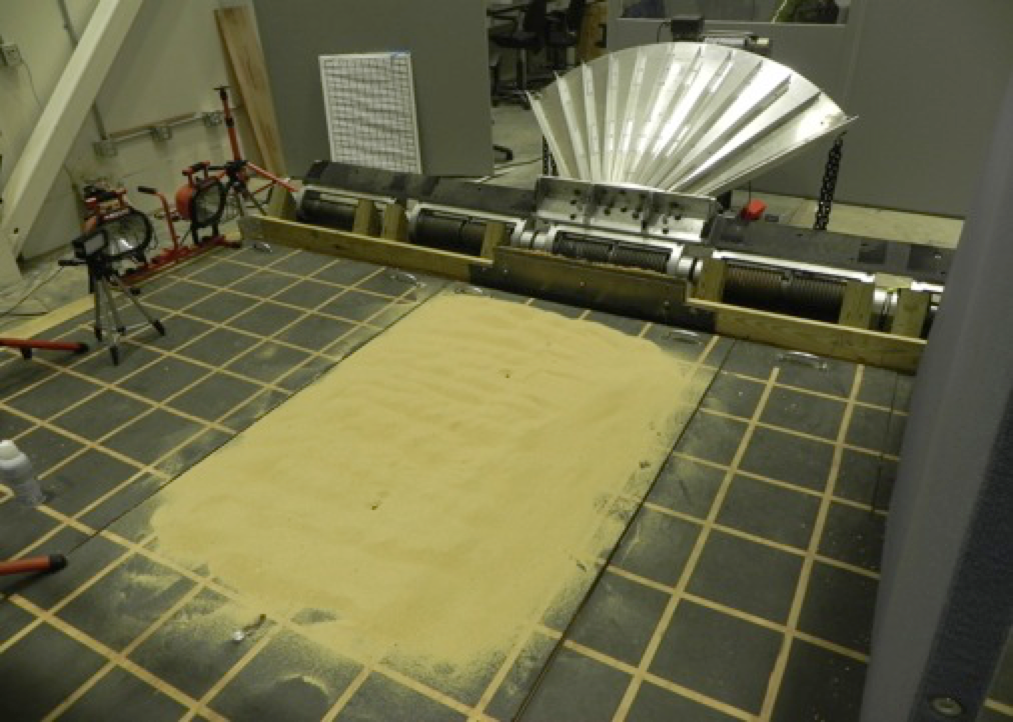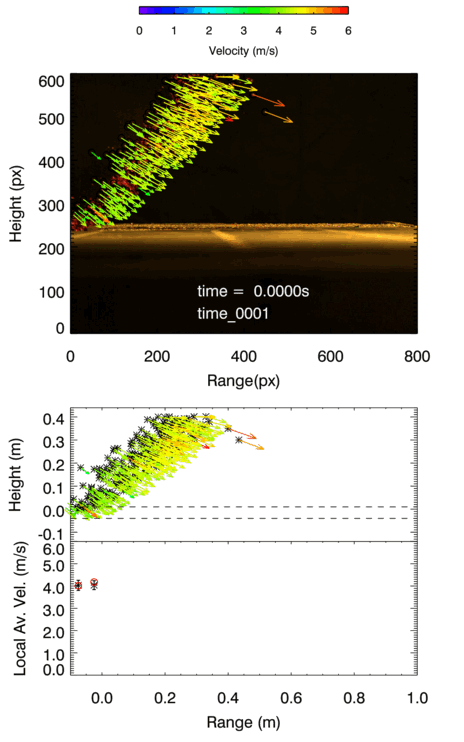The Ejecta Catapult¶
This unique facility (Figure The PIL’s Ejecta Catapult.) permits investigating the physics of emplacement of large amounts of debris (4–100kg), with velocity and mass distributions that resemble those of expected during impact and explosion cratering. The scale of this facility is large so that the physics of emplacemennt of significant amounts of ejecta mass can be assessed, in far greater amount that is typically possible during small-scale laboratory experiments. Material is launched from a curved plate that measures 1.5 m by 1.5 m, using a series of massive springs, onto a larger 4 m by 4 m target region. The debris can be launched in excess of 5 m/s and can simulate ejecta excavated from a crater of ~1–10 m in diameter. Such a large facility is typically needed as granular processes are highly volume dependent. The facility is intended to understand hazards posed by debris launched by impacts, and the emplacement process of planetary ejecta for various terrain types and internal rheologies. Pressure gauges, laser sheet, high-speed cameras, and particle velocity interferometry techniques are shared between the Vertical Gun Range and this facility to investigate the impact and ejecta emplacement process.

The PIL’s Ejecta Catapult.¶
The high speed cameras characterize the velocity distribution of the ejecta generated by the catapult, while handheld cameras provide videography for qualitative interpretation from other perspectives. The cameras are capable of recording movies from a few 100 to 100000 frames per second (fps), which provide measurements of the velocity of the ejecta gravel in flight and during emplacement on our various target surfaces (see Figure Measuring ejecta velocity.)

Measuring ejecta velocity.¶